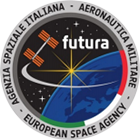L+24, +25: Replanning and ocular health
Friday
14:55
The big news of the day here on the Space Station is that we’re not going to grapple Dragon on Sunday any more: as you might have heard, the SpaceX-5 resupply mission has been delayed for a few weeks, and now of course the teams on the ground are working hard to replan the days ahead to make good use of our time up here as all the SpaceX-related activities have disappeared from our timeline for now.
In particular, tomorrow was supposed to be mostly a day-off, in view of a very busy Sunday working on Dragon arrival, but now we’re back to a regular working Friday and an off-duty weekend. During our evening Daily Planning Conference with the control centers the typical opening call from Houston “The plan is onboard” was replaced by “The plan is NOT onboard”, meaning that the planning teams were still working out the details of our schedule for tomorrow – it will be finalized in the next hours and uploaded during our sleeping period, so we’ll be ready to go tomorrow morning.
Yesterday I got to work with Japanese airlock again: Butch and I removed the satellite deployer that was installed on the slide table and, with the real-time assistance from the JAXA control center in Tsukuba, we did some inspection work to troubleshoot an anomaly with some limit indicators (the sensors that tell you the current position of the slide table).
These have also been a couple of intense ocular health days for me: there’s been a great deal of focus in recent years on the eyes, since we’ve become aware of some vision degradation in many crewmembers of long duration mission. The jury is still out on the exact cause and it’s therefore important to gather a lot of data. I started yesterday with a relatively simple vision acuity exam, not much different from what you probably know from your eye doctor visits. Then Terry measured the pressure of the fluid inside my eye bulb by gently tapping the surface of the eye with an instrument called tonometer (did I mention already that we really have to trust our crewmates up here?).
And today we got images of the eye using two different instruments: a fundoscope (which is the one in the picture) and a tomography machine (specifically, if you’re savvy about these things, which I am not, an Optical Coherence Tomograph). All these tests require the assistance of another crewmember, interacting with a remote guider on the ground who has real time images from the equipment and a camera view of us working up here.
That’s not all, though: tomorrow we’ll also do an eye ultrasound!
Futura mission website (Italian): Avamposto42
avamposto42.esa.int
#SamLogBook #Futura42
(Trad IT) Traduzione in italiano a cura di +AstronautiCAST qui:
https://www.astronautinews.it/tag/logbook
(Trad FR) Traduction en français par +Anne Cpamoa ici:
https://spacetux.org/cpamoa/category/traductions/logbook-samantha
(Trad ES – Currently not updated) Tradducción en español aquí:
https://www.intervidia.com/category/bitacora
19/12/2014





